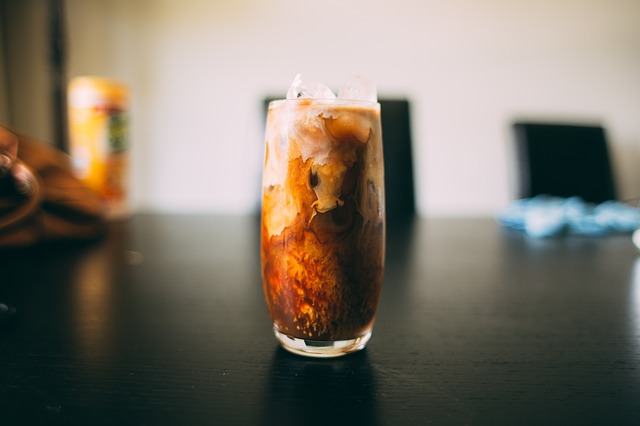
For many of you the best thing about the morning is that fresh cup of hot coffee. Time once was that coffee meant either coffee black or with cream and sugar. Since then coffee has become a dazzling array of flavor choices and methods of preparation. It has been a somewhat guilty pleasure as the general belief has been that coffee is not good for you. The focus of this belief has been the caffeine content of the coffee. Caffeine has been associated with nervousness, sleep disturbance, and a host of health issues like high blood pressure. So the medical advice has been to avoid coffee for many years now.
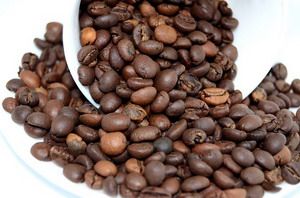
Well the good news for you coffee lovers out there is that the FDA has decided that coffee is perfectly healthy as long as you keep the levels under five cups a day. In point of fact, coffee is a very potent antioxidant like blueberries – only much stronger. Coffee contains a whole bunch of powerful health promoting phyto-nutrients. There still remains one major health issue with coffee, rancid oils.
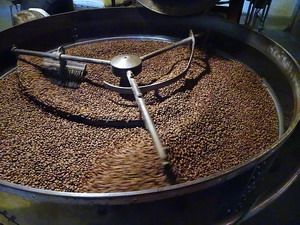
When coffee is roasted the natural oils are released and exposed to the roasting temperatures causing them to go rancid. The whole bean that has been freshly roasted has the least rancid oils, while ground coffee exposed to the air has the most. That is why I have always recommended to patients that drink coffee to keep their freshly roasted beans in the freezer to minimize further rancidity. I tell them to only grind as much as necessary for their immediate use.
Until recently this was the best advice I had for patients to make their coffee experience as healthy as possible. I have since been exposed to two other alternatives that are even healthier. The first was a report by my son 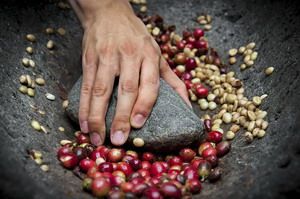 about a way they drink coffee in central America. Instead of roasting the coffee beans, they use the green beans and make a type of coffee tea out of them. Since no roasting is involved, the rancid oil problem is minimized. He says it is a delightful beverage with lots of taste, but different than the coffee taste he is used to.
about a way they drink coffee in central America. Instead of roasting the coffee beans, they use the green beans and make a type of coffee tea out of them. Since no roasting is involved, the rancid oil problem is minimized. He says it is a delightful beverage with lots of taste, but different than the coffee taste he is used to.
 about a way they drink coffee in central America. Instead of roasting the coffee beans, they use the green beans and make a type of coffee tea out of them. Since no roasting is involved, the rancid oil problem is minimized. He says it is a delightful beverage with lots of taste, but different than the coffee taste he is used to.
about a way they drink coffee in central America. Instead of roasting the coffee beans, they use the green beans and make a type of coffee tea out of them. Since no roasting is involved, the rancid oil problem is minimized. He says it is a delightful beverage with lots of taste, but different than the coffee taste he is used to.The other alternative is cold brew. This is a “new” idea for this country. It basically amounts to taking your favorite roasted beans, grinding them fresh, and mixing them with cold purified water, and letting them sit for 12 to 24 hours. This is similar to the process used for making sun tea, but without the sun. After the coffee grounds have soaked/steeped for the required time, you pour the resultant liquid through a tight mesh strainer to catch the grounds, and what is left is now your coffee concentrate for making your coffee in the morning.

Typically this coffee concentrate is triple strength, so you bring 2/3rds cup of water to a boil and add 1/3rd cup of cold brew to the water to make your coffee. What is the advantage to all this fuss? It takes heat to dissolve the oils out of the coffee grounds. By using only cold water on the grounds, you get only the water-soluble components coming out of the coffee into the water and leaving the oils behind. This makes a much smoother coffee, as it is usually the oils that carry the acid bite in the coffee. So cold brewing makes a tastier, mellower cup of coffee without the gut irritating rancid oils.

I take about a half-cup of beans kept in the freezer and grind it into a coarse grind. I put the grind into a quart Mason jar and fill it the rest of the way with water. Cap it and let it set overnight. The next morning I will pour it out through a nut milk bag to strain out the grounds. The nut milk bag makes this step super easy – much easier than filtering it. I return the grounds to the jar and fill it up with 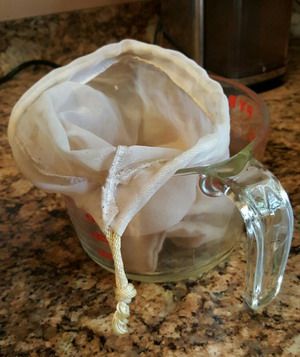 water again. This second brew I leave until the next morning. The second brew simply gives us more coffee for our buck, but the second brew will not be as strong. I use it straight – no water added – heating it up for morning coffee for Ellen.
water again. This second brew I leave until the next morning. The second brew simply gives us more coffee for our buck, but the second brew will not be as strong. I use it straight – no water added – heating it up for morning coffee for Ellen.
 water again. This second brew I leave until the next morning. The second brew simply gives us more coffee for our buck, but the second brew will not be as strong. I use it straight – no water added – heating it up for morning coffee for Ellen.
water again. This second brew I leave until the next morning. The second brew simply gives us more coffee for our buck, but the second brew will not be as strong. I use it straight – no water added – heating it up for morning coffee for Ellen.In using the first brew, I heat up water to boiling and pour it into a coffee cup till it is 2/3rds full. Around our house, I then add 1 piece of anti-inflammatory chocolate and let it melt in the hot water. After I mix that melted chocolate into the water with a spoon, I then add 1/3rd cup of the cold brew concentrate. It is now ready to drink. Obviously the chocolate is not necessary, but it really turns this coffee into a wonderful inflammation fighting mocha brew.
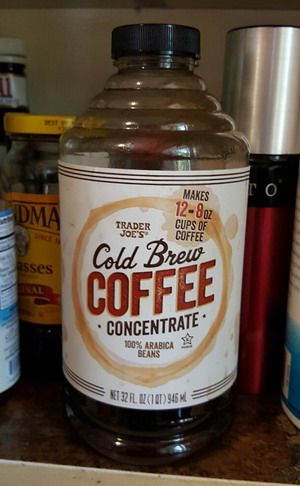
For those of you that don’t want to go to all the trouble of brewing your own cold brew concentrate, Trader Joe’s sells quart bottles of the cold brew. We have used this as well, and it tastes quite nice. But my inclination is to make things from scratch as much as possible.
If you like cream in your coffee, I suggest using the canned coconut milk like we have in the office. This gives a very nice creamy feel and flavor to the coffee. For sweetener I recommend using stevia and staying away from the sugar. My Supersweet drops work quite well for this purpose.

So the official word is “coffee is back” as a healthful beverage. Keeping it healthy by staying away from the sugar and dairy cream makes it even better. Cold brew takes away the bitter acids and rancid oils that make coffee even healthier still. So tip that cup back and enjoy that favorite of beverages, coffee.
